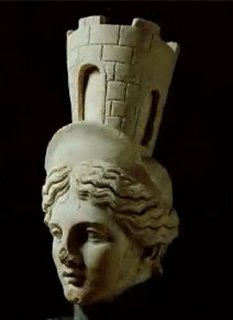Ante Diem XIV Kalendas January

Modern Date : December 19th
Ante Diem XIV Kalendas January
Fourteenth Day to the Kalends of January
This day is for special religious observance.
The Opalia
This day is sacred to Ops (Cybele or Rhea), the mother goddess. She was the wife of Cronus and the mother of Zeus. her priests were called the Corybantes.
This is also the third day of the Saturnalia. The Saturnalia is one of the most festive and uninhibited that the ancient Romans celebrated. It went on for seven days and encompassed the Winter Solstice, a time of religious observance for cultures the world over. Feasts were provided by the temples and were open to the public, the poor and the homeless. Servants and masters were met on equal terms. Unable to prevent the people's natural festive inclinations at this time of year, early Christian leaders, clever Greeks that they were, moved Christmas to December and claimed the celebration for their own.
During the Saturnalia, rules were set aside, schools were closed, and slaves could meet their masters on equal terms. Human kindness was the theme and war and the punishment of criminals was halted. The exchange of gifts was universally practiced. Strenae, which were boughs to which were attached cakes or sweetmeats, were exchanged by visitors and guests. Other common gifts included wax candles (cerei) and sigillaria, which were doll-like clay figures, a particular favorite of children.
The emperor Licinius abdicated this day in 324 AD, and was executed the next year. He was 60.
Decima, the middle Fate in charge of the present, presides over December, but the month may have received its name as the tenth month of the Roman calendar. Vesta, patroness of fire also laid claim to the month of December.
Solar Alignment
On this day the Sun crosses the Galactic Center point at 28° Sagittarius--or, more precisely, the Sun is now positioned at the exact midpoint of an imaginary line between the Galactic Center and Earth. The effect of this is to create a brief window of very high receptivity and clarity in transdimensional communication. For those willing to listen, the air shimmers with guidance and inspiration.
Uinal of Rebirth
In the Mayan calendar systems, this day begins the Uinal of Rebirth, the eleventh of the 20-day uinals in the current cycle of the Tzolkin, or 260-day calendar (6 Imix, Tzolkin 201). The symbolic bird for this uinal is the Scarlet Macaw, the energy principle that of flowering.
In the year 2012 the Solar Alignment and Uinal of Rebirth will both fall on the Winter Solstice, a magical time indeed.

